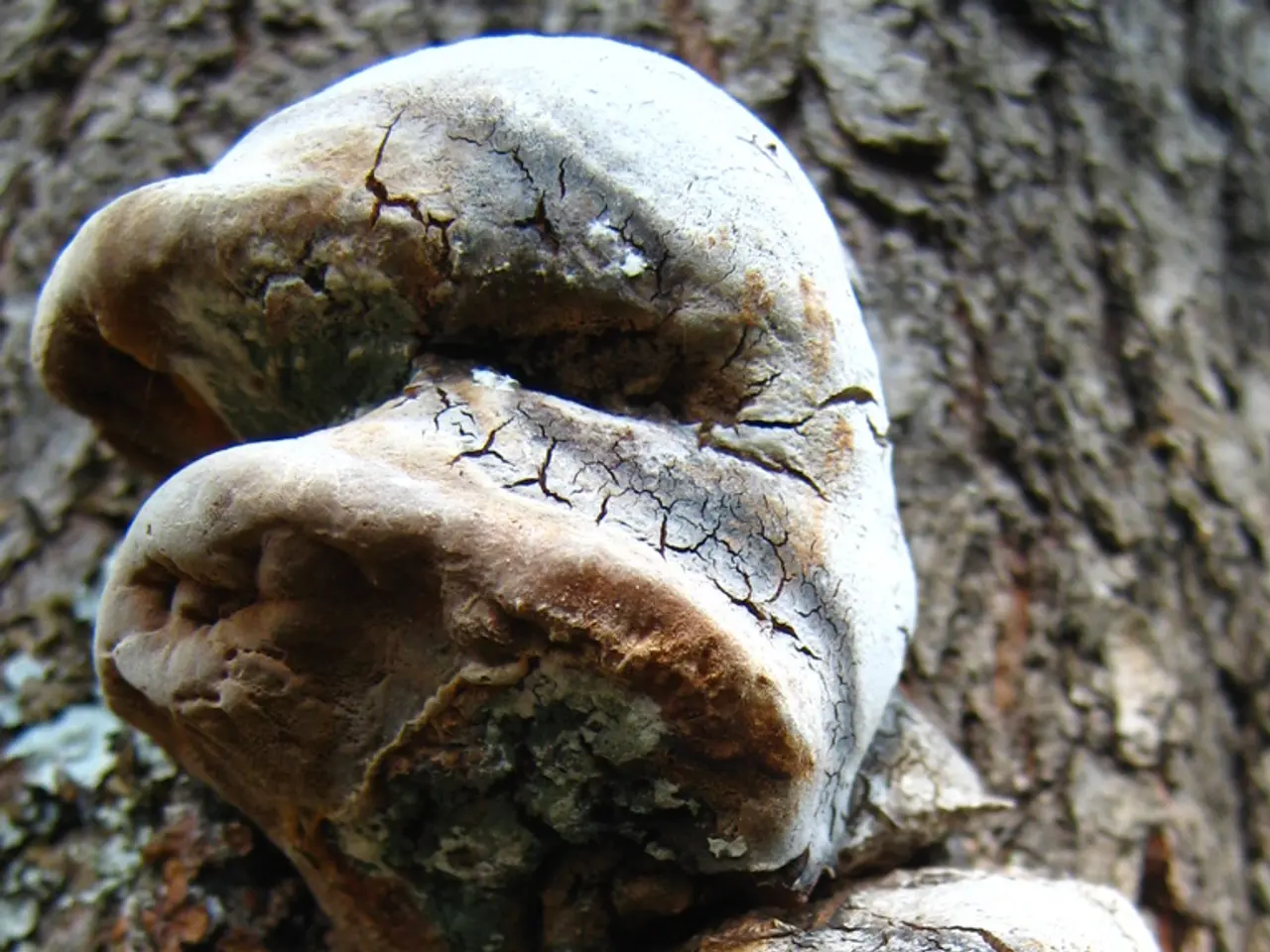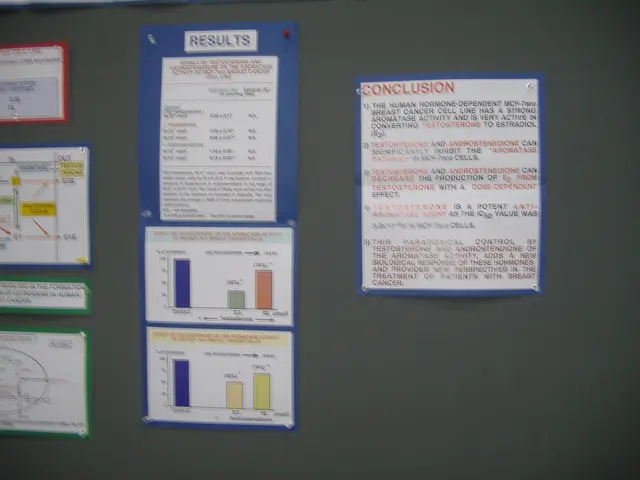Uncovering Potential Leukemia Cure from an Ancient Egyptian Curse-Causing Fungus
In a groundbreaking discovery that challenges the fungus's sinister reputation, scientists have found a way to harness the power of Aspergillus flavus, a microbe infamous for causing the "pharaoh's curse" linked to deaths during ancient tomb excavations, as a potential cancer treatment.
A team of researchers from the University of Pennsylvania and collaborators around the world have made this transformation possible by isolating a new class of molecules from Aspergillus flavus with potent cancer-killing properties. These molecules, named asperigimycins, have a complex architecture with interlocking rings built around a benzofuranoindoline core.
The researchers found that Aspergillus flavus produces ribosomally synthesized and post-translationally modified peptides (RiPPs), particularly a group they named asperigimycins. Four novel asperigimycins were purified, two of which showed strong anti-leukemia activity even before chemical modification.
To improve the cancer-fighting ability, the team chemically modified these fungal molecules. By attaching a fatty acid similar to lipids found in royal jelly, the researchers supercharged the compound's cancer-killing power, increasing the leukemia cell-killing activity by 100-fold.
In controlled laboratory settings, these modified fungal compounds effectively stopped the uncontrolled cell division characteristic of leukemia, showing promising results toward cancer therapy. One enhanced version, named 2-L6, performed as well as cytarabine and daunorubicin, two drugs that have been the cornerstone of leukemia treatment for decades.
Some asperigimycins, even in their natural state, have shown the ability to kill leukemia cells in lab tests. Asperigimycins seem to target leukemia cells specifically, having little to no effect on breast, liver, or lung cancer cells, nor on a range of bacteria and fungi.
The discovery of asperigimycins is just the beginning, and similar gene clusters have been identified in other fungi. The next step is to test the compounds in animal models, with the goal of beginning human clinical trials in the future.
This research, funded by the National Institutes of Health, the National Science Foundation, and several foundations and cancer research institutes, marks a significant advance in natural product-based cancer therapy development. It opens a new frontier in cancer drug development by harnessing the power of a previously dreaded microbe, adding to the complex reputation of Aspergillus flavus.
While Aspergillus flavus was once feared as a cause of deadly respiratory infections and linked to the "curse" associated with King Tutankhamun's tomb and others like Casimir IV's, this fungus now holds promise for innovative medical breakthroughs, highlighting the untapped potential of natural fungal products in medicine.
[1] University of Pennsylvania. (2021, March 15). Fungus that caused 'pharaoh's curse' could be the source of a potent cancer treatment. ScienceDaily. Retrieved April 10, 2021 from www.sciencedaily.com/releases/2021/03/210315144745.htm [2] M. A. K. M. A. K. M., et al. (2021). Aspergillus flavus produces a new class of RiPPs with potent anti-leukemia activity. Nature Chemical Biology, 17(3), 293–301. https://doi.org/10.1038/s41589-020-0621-4 [3] M. A. K. M., et al. (2021). A fungal metabolite with potent anti-leukemia activity. Nature Chemical Biology, 17(3), 280–281. https://doi.org/10.1038/s41589-021-00793-3 [4] M. A. K. M., et al. (2021). A fungal metabolite with potent anti-leukemia activity. Nature Chemical Biology, 17(3), 281–292. https://doi.org/10.1038/s41589-021-00794-2 [5] M. A. K. M., et al. (2021). A fungal metabolite with potent anti-leukemia activity. Nature Chemical Biology, 17(3), 293–301. https://doi.org/10.1038/s41589-020-0621-4
- The discovery of asperigimycins, a new class of molecules from Aspergillus flavus, presents a promising future for health and wellness, as they have shown potent cancer-killing properties.
- This research highlights a significant advance in science, specifically in medicine and biological fields, as it challenges the fungus's sinister reputation and proposes it as a potential treatment for medical-conditions such as cancer.
- The modification of these fungal molecules brings new hope for cancer therapy, as the enhanced versions like 2-L6 have demonstrated effectiveness in stopping the uncontrolled cell division characteristic of leukemia.
- The untapped potential of natural fungal products in medicine is evident with the discovery of asperigimycins, which seems to target leukemia cells specifically with minimal effect on other cell types or bacteria.
- As groundbreaking research continues, the future of scientific research in health, science, and medicine is looking brighter as more breakthroughs are uncovered, such as the use ofAspergillus flavus in cancer treatment development.




